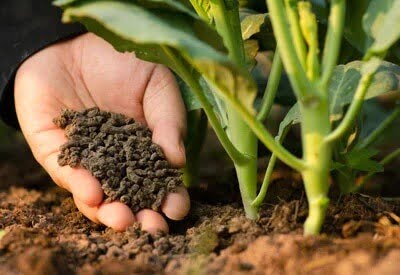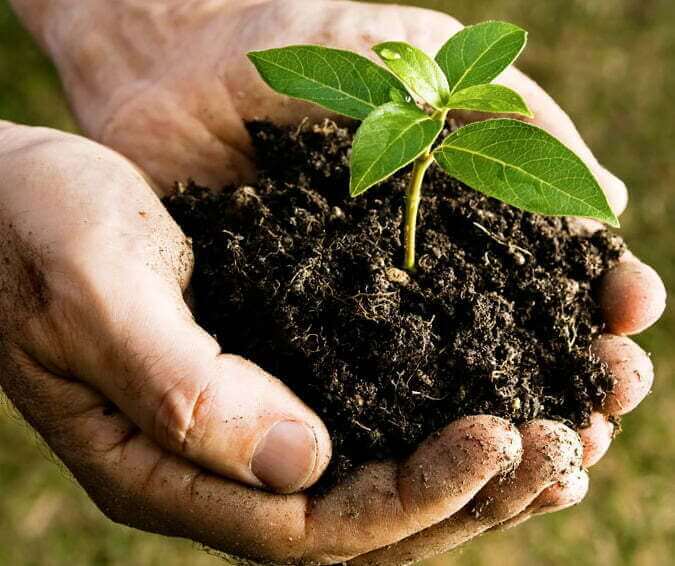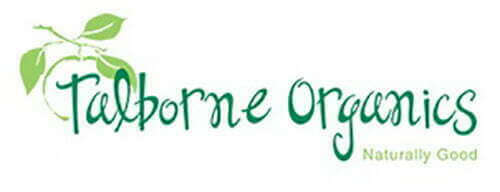How to Make Soil More Fertile The Natural Way
Role of Cover Crops in Soil Fertility:
Cover crops, such as clover, vetch, and rye, play a pivotal role in enhancing soil fertility. These plants are not harvested but are grown specifically to enrich the soil. They fix nitrogen, an essential nutrient, directly from the atmosphere into the soil, making it available for future crops. Additionally, cover crops prevent soil erosion, suppress weeds, and improve soil structure by increasing organic matter content. This natural method of enriching the soil not only reduces the need for synthetic fertilizers but also promotes a healthier and more sustainable agricultural ecosystem.
Importance of Crop Rotation:
Crop rotation is a time-tested agricultural practice where different types of crops are planted sequentially in the same area across seasons or years. This practice is crucial for maintaining soil fertility and health. Different crops have varying nutrient requirements and pest and disease profiles. By rotating crops, farmers can naturally replenish soil nutrients, break cycles of pests and diseases, and reduce the dependency on chemical inputs. For example, following a nitrogen-consuming crop like corn with a nitrogen-fixing legume can naturally restore the balance of this vital nutrient in the soil.
Incorporating Biochar:
Biochar, a highly porous and carbon-rich material obtained from the thermal decomposition of organic matter in an oxygen-limited environment, offers significant benefits for soil fertility. When incorporated into the soil, biochar improves soil structure, enhances water retention, and increases nutrient holding capacity. It provides a habitat for beneficial soil microbes, thereby boosting soil biodiversity and health. Moreover, biochar can sequester carbon in the soil for hundreds of years, contributing to climate change mitigation by reducing greenhouse gas emissions.
Encouraging Biodiversity:
Biodiversity is a key element in maintaining and enhancing soil fertility. A diverse range of plants, insects, microorganisms, and animals contributes to a healthy soil ecosystem. Each organism plays a specific role – from decomposing organic matter and cycling nutrients to controlling pests and improving soil structure. Encouraging biodiversity in agricultural systems, such as through mixed cropping, hedgerows, and natural pest predators, creates a more resilient system that can better withstand pests, diseases, and climate fluctuations while sustaining fertile soils.
Integrating Permaculture Principles:
Permaculture principles focus on designing agricultural systems that mimic natural ecosystems, aiming to create sustainable and self-sufficient landscapes. These principles include creating diversity, utilizing renewable resources, and recycling nutrients within the system. By integrating permaculture principles, farmers and gardeners can enhance soil fertility naturally. Techniques like companion planting, creating food forests, and using natural composting methods enrich the soil, reduce waste, and create a harmonious balance between the land and its inhabitants.
Use of Green Manures:
Green manures are plants grown specifically to be plowed back into the soil to improve soil fertility. They are typically fast-growing plants like legumes, grasses, or brassicas, which are sown and then incorporated into the soil while they’re still green and lush. Green manures add organic matter to the soil, which decomposes to release nutrients, improves soil structure, and enhances its ability to hold water and nutrients. This practice is particularly beneficial in managing soil erosion, suppressing weeds, and naturally adding nitrogen to the soil when leguminous plants are used.
Educating on the Long-term Impact of Soil Health:
Soil health is fundamental to our planet’s ecosystem, playing a critical role in food security, climate regulation, and biodiversity. Educating farmers, gardeners, and the broader community on the long-term impacts of soil health is crucial. Healthy soil leads to robust plant growth, higher yields, and more nutritious crops. It also supports diverse ecosystems, stores carbon, and helps filter water. Understanding these benefits encourages sustainable farming practices that go beyond short-term yields to consider the long-term viability and environmental impact of agricultural methods. This education can foster a shift towards more sustainable and regenerative farming practices worldwide.

Lets look at improving soil naturally
As a result of excessive fertilizer use in agriculture and inadequate sewerage disposal, free nitrogen and phosphorus has triggered massive blooms of algae in the freshwater and marine environments. The millennium assessment found that excessive nutrient loading is one of the potential “tipping points” that can suddenly destroy entire ecosystems. So how do we clean up our act when applying fertilizer?
What is Fertilizer?
All fertilizers are made up of chemical nutrients. Nutrition of plants, animals and humans is chemistry in action. Their qualities and actions are however determined by their origin and level of treatment.
Synthetic Fertilizer
Although some are obtained from natural mineral deposits their chemistry is altered through chemical treatment to make unavailable plant nutrients accessible to plants e.g. superphosphate. Others are waste products of the chemical and mining industry, and the nutrients are often bound to a carrier salt to make them water soluble. High concentrations of nutrients are supplied to plants though osmotic solution in water. Plants show quick growth response, but fertilizer needs to be re-applied frequently. Most feed one to three nutrients only, with the exception of some speciality mixes. As nutrients are water soluble they are easily leached, especially from sandy soils. With long term use or overuse, soils degrade and soil life declines.
Natural Fertilizers
Fertilizers obtained from natural sources supply a buffet of plant nutrients (NPK & trace nutrients) to replenish nutrients in soil. IFOAM (International Federation of Organic Agriculture Movements) sets worldwide standards for certified organic growing to prevent soil and water pollution so inputs may not harm eco-systems. They are the first choice for the environmentally conscious, as soil health is promoted. Sustained release of nutrients ensures longer feeding, no burning and stronger plants less prone to pests and disease. Others are from natural mineral deposits. Natural nutrients are released by the decomposition action of microbial soil life and plant exudes, and are therefore not rapidly lost through leaching.
Compost and Manure to improve soil fertility
Although often marketed as organic fertilizers, compost and manures seldom contain nutrient levels sufficient to stimulate vigorous plant growth in South Africa’s low nutrient soils. They are from natural lifecycles, like waste from plants and animals. These are built on a carbon structure, and would not have been radically altered from their natural state. For example they might have been composted, sterilized, milled or pelleted for ease of application. The value of compost is that it improves water retention and soil structure, adds carbon which is the building block of all living things, supplies humic acids to stimulate healthy plant growth and it is food for microbes. Only composted manures sourced from well run farms and healthy animals should be added in limited quantities to condition soil. Effective composting sanitises harmful pathogens, stabilises nitrogen, denatures weed seeds and leaches excess salts.
Synthetically Enriched Organic Fertilizers
An organic base, usually chicken manure, is enriched with synthetic fertilizer to boost major nutrient levels. This buffers and preserves extensively farmed soils by adding carbon and compost to an extent. Plants, leaves and roots can burn if incorrectly applied.
Another quotation from ‘The Secret life of Compost’ sums it up as follows: “The study of history and civilization shows that those who took care of the soil survived, while those who mistreated the soil didn’t”.
Interesting info:The state of the world assessment at the start of the new millennium found that two thirds of the delicately balanced ecosystems studied have suffered badly at the hands of man over the past 50 years. Some 15 of the 24 ecosystems vital for life on Earth have been seriously degraded or used unsustainably. Significant problems such as climate change causing disrupted weather patterns, excessive nutrient loading in freshwater systems in dams and rivers, extinctions in animal and plant species, are clear and visible symptoms of this. These factors are impacting on the profitability and sustainability of farming. The WWF in South Africa produced a sustainable farming policy guide for commercial farmers to adapt as their contribution to rescue degradation in “The Green Choice Living Farms Reference 2009/2010”. |



